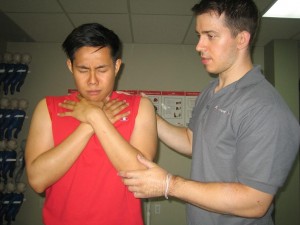Dust mite allergy is an allergic response to miniature bugs that lives in house dust. Signs of dust mite allergy are sneezing and runny nose, and sometimes asthma can be experienced, like wheezing and difficulty in breathing. Dust mites are related to ticks and spiders and too small to see without a microscope. Dust mites feed on skin cells shed by people and lives in warm and humid environment such as beddings, upholstered furniture and carpets.
https://www.youtube.com/watch?v=L_JuVuespm4
Some symptoms of dust mite allergy that causes inflammation of the nasal passageways include the following:
- Itchy and watery eyes, sneezing, and runny nose
- Congestion of nasal passages
- Swelling, blue-colored skin found under the eyes
- An tickly nose, top of the mouth or throat
- Postnasal drip
- Cough
- Pressure on the face, pain and upward rubbing of the nose

Symptoms of dust mite allergy that causes asthma include the following:
- There is tightness of the chest and pain
- Difficulty in breathing
- A distinct wheezing during exhaling
- Coughing or wheezing that are aggravated by respiratory virus like cold or the flu.
- There is difficulty in sleeping caused by coughing or wheezing and shortness of breath.
A dust mite allergy ranges from mild to severe. A mild dust mite allergy can cause infrequent runny nose, watery eyes and sneezing. In severe cases of dust mite allergy, it can be on-going or chronic that results in tenacious sneezing, cough, congestion, facial pressure and a serious asthma attack. You have to be prepared to help out an individual by enrolling in a course on first aid today.
Causes of dust mite allergy
Allergies happen when the immune system will react to foreign substances like pet dander or dust mites and pollen. The body produces a protein known as antibodies and some of these antibodies protect the body from unwanted invaders that makes the person sick or cause an infection. When an allergen is inhaled or came in contact with it, the immune system of the body will respond and produces an inflammation in the nasal passages or lungs. A prolonged or a regular exposure to the allergen can cause chronic inflammation caused by asthma.
Treatment and home remedies
- Cover the mattress and pillows with dustproof or allergen blocking covers since they are made of woven fabrics that prevent dust mites from escaping from the mattress and pillows. Cover box springs in allergen-proof covers.
- Wash all beddings such sheets, blankets, pillowcases and bed covers in hot water at 130 F (54.4 C) in order to kill dust mites and remove all allergens. If beddings cannot be washed, put the items in a dryer for 15 minutes at 130 F (54.4C) in order to kill the mites. Freezing can also kill dust mites but cannot remove the allergens.
- Maintain humidity below 50 percent in the home such as a dehumidifier or an air conditioner can help make the humidity low and a hygrometer can be used to measure humidity levels.
- Avoid beddings that are difficult to clean frequently.
- Buy washable stuffed toys that can be washed in hot water and dry thoroughly. Avoid putting stuffed toys in beds.
- Clean dust by using a damp cloth or oiled mop or rag since it will prevent dust from becoming airborne and resettling.
- Remove clutters in the room such as table tops, ornaments, books, magazines and newspapers.
